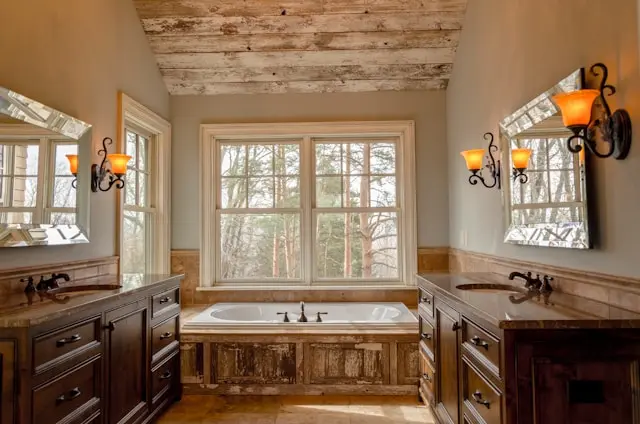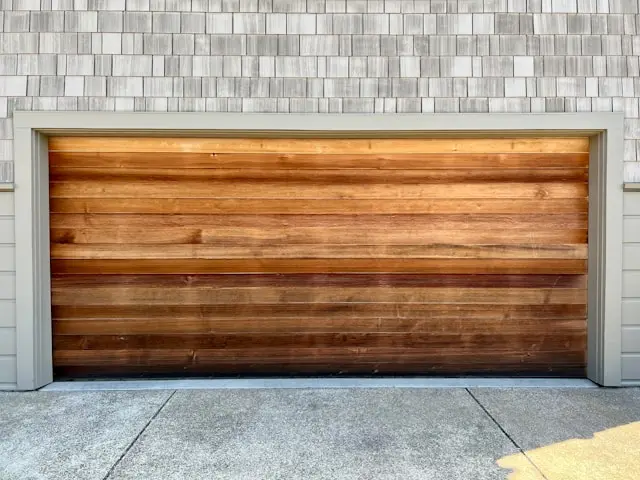Key Takeaways:
- Mixing contemporary and rustic elements creates a unique and inviting atmosphere.
- Wood ceiling fans serve as a versatile focal point in combined decor styles.
- Understanding balance and contrast is crucial for a successful design.
Table of Contents:
- Why Blending Styles Works
- The Importance Of Balance
- Choosing The Right Elements
- The Role Of Color And Texture
- Making A Statement
- Practical Tips For Implementation
Why Blending Styles Works
Combining contemporary and rustic elements in ceiling décor is a versatile, timeless design style that appeals to various tastes. This mix of elements creates a rich and layered aesthetic, blending clean lines, minimalism, and efficiency with warmth, texture, and a sense of history. Achieving this balance involves understanding the common ground between the two styles and using it to create a balanced, inviting atmosphere. For instance, a loft-style living room with exposed brick walls, industrial light fixtures, and beautiful wood ceiling fans can make a thoughtful and curated space.
The Importance Of Balance
A room’s modern and rustic design elements must be blended to look cohesive and beautiful. Avoid cluttering the space with too many rustic elements while neglecting contemporary design. Consider textures, materials, and colors to find a middle ground. Balance isn’t just about appearances but also about achieving functional equilibrium. Modern furniture should be practical, while rustic elements promote relaxation and comfort. You can achieve this balance by combining modern furniture with rustic accessories like woven rugs and vintage decor. This balance ensures a visually appealing and functional space.
Choosing The Right Elements
To blend different styles, choose a focal point, such as a wooden ceiling fan or a modern pendant light. Add complementary elements like sleek furniture and minimalistic decor for a contemporary feel, or incorporate reclaimed wood, natural fibers, and earthy color palettes for a rustic touch. Maintain balance by pairing large rustic beams with slim metal furniture. Integrate new and old elements to achieve a cohesive look, ensuring each style complements the other rather than competing for attention.
The Role Of Color And Texture
Use core tones such as white, gray, and beige to blend modern and rustic features. Then, introduce contrasting textures by combining rough-hewn wood with polished surfaces. Incorporate materials like metal, stone, and glass alongside timber, wool, and leather. To achieve a compelling texture mix, you may, for instance, contrast a polished marble background with a rustic wooden ceiling fan. Adding rugs, cushions, and throws can provide extra layers, making the space feel rich, multidimensional, and visually stimulating.
Making A Statement
Wooden ceiling fans are versatile and practical additions to any room, offering functional and aesthetic benefits. Their natural material allows them to blend seamlessly into contemporary and rustic settings, bridging the gap between elements. A striking wooden fan can make a bold statement, drawing the eye and becoming a conversation piece. However, it’s essential that the statement is manageable and that the fan is thoughtfully chosen to complement the rest of the decor.
Practical Tips For Implementation
- Start Small: Begin with one or two key pieces and gradually add more elements. It’s easier to achieve a balanced look when you add decor items incrementally.
- Mix And Match: Feel free to mix different materials and textures. Wooden elements can provide warmth, while metals add a sleek, modern touch.
- Light It Up: Use lighting to highlight the features you want to stand out. Spotlights or pendant lights can effectively emphasize architectural and decorative elements.
To achieve a harmonious and practical living environment, begin by gradually adding elements and then stepping back to view the space from various angles. Use mood boards and samples to understand how textures and colors complement each other. Ensure all elements have a purpose and contribute value to the space, creating a visually appealing and comfortable living environment. This balance between form and function is essential for a successful ceiling design.



